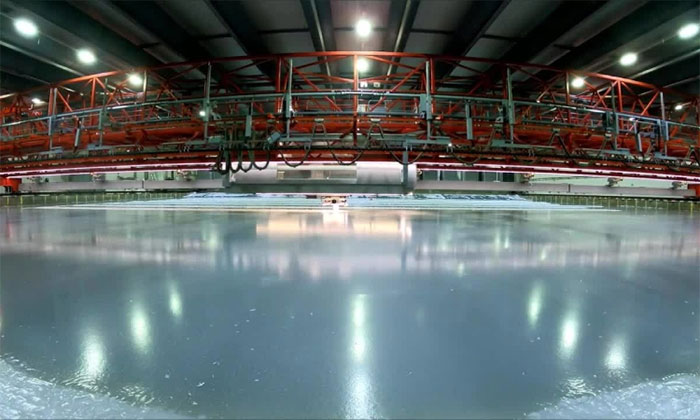Testing Wind Turbine Models at Aalto Ice Tank Provides Valuable Insights for Future Offshore Wind Farms in Cold Waters.
Video: Aalto University
An international research team visited the Aalto Ice Tank in Finland to study the detailed interactions between large wind turbines and icy environments, reported Interesting Engineering on February 28.
While many countries are implementing renewable energy plans, the construction of wind farms is often limited to relatively warm areas. The primary reason is that experts do not fully understand how large turbines operate in icy conditions.
“We do not yet fully understand the types of forces and pressures that ice exerts on offshore wind turbines. This is the first time a research team has conducted laboratory experiments with a controlled scaled model to investigate this,” said Arttu Polojarvi, an associate professor of ice mechanics at Aalto University.
Polojarvi is collaborating with experts from Delft University of Technology and Siemens Gamesa Renewable Energy to explore these issues at the world’s largest indoor ice tank. Measuring 40m x 40m, the Aalto Ice Tank is one of the few places in the world where scientists can create large ice blocks and accurately test how they interact with artificial materials.
However, the size of the ice tank is still insufficient for the research team to test full-sized wind turbines. Therefore, they constructed a model at a 30:1 scale while simulating wind and other conditions that turbines face at sea.

Testing the model’s anchor through a large ice block to simulate wind turbine collisions with ice at the Aalto Ice Tank.
The research team estimates that the turbine model they are testing can withstand an impact force of 8 meganewtons—equivalent to about 1/10 of the thrust generated by SpaceX’s Starship during launch or the combined thrust of 16 jet engines.
Experiments were also conducted at a temperature of -11 degrees Celsius to examine the actual interaction of wind turbines with ice when it breaks. “Preliminary results show something we have not seen before in other structures like lighthouses, channel markers, or oil rigs. Wind turbines are very tall, very slender, and can move significantly. What we witnessed in the experiments appears to be a completely new type of impact caused by ice,” said Hayo Hendrikse, an associate professor studying ice-structure interactions at Delft University of Technology.
Based on the data collected, scientists are working to test various scenarios that wind turbines may encounter over 50 years of operation in the frigid waters of the Baltic Sea in Europe or the Great Lakes in North America. Their findings could enable the construction of offshore wind farms in the coldest regions of the planet in the future.

















































